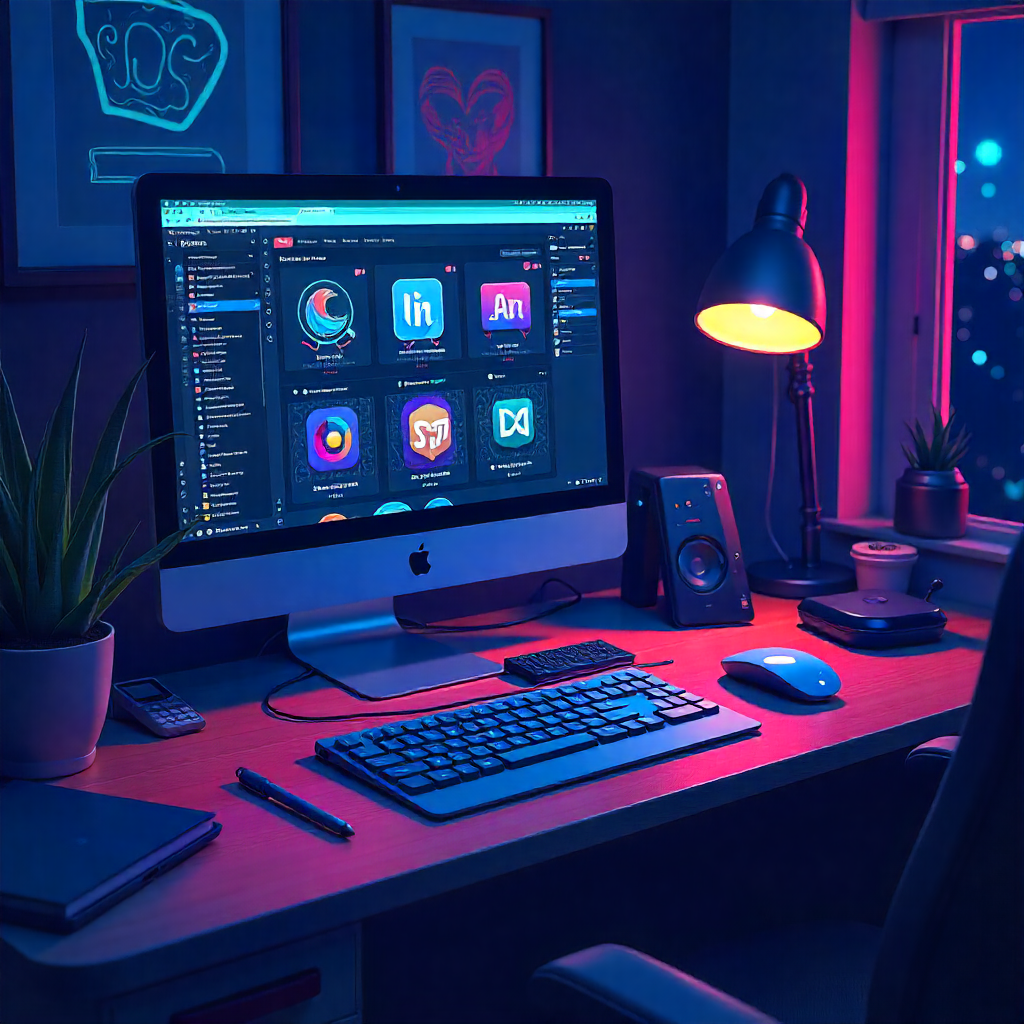“Design is intelligence made visible.” Alina Wheeler
Design Starter Pack
AI copilots, cult classics, and the apps reshaping how we design today
Graphic design feels like a crowded kitchen. Half the chefs swear by grandma’s cast-iron pans (old-school mastery), while the other half are tossing ingredients into AI-powered smart ovens that practically plate the dish for you. The question isn’t which tool is best it’s which set helps you cook up the most irresistible designs right now.

The Big Three
Where Everyone Starts
“Simplicity is the ultimate sophistication.” Leonardo da Vinci
These are the platforms you’ll hear about in every café brainstorm session.
- Canva — With Magic Studio, it’s more than drag-and-drop; it’s an AI sidekick generating layouts, captions, and full brand kits. Over 170M monthly users make it the most accessible design passport in the world.
- Figma — Still the darling of collaboration. Its new AI-powered prototyping is like wireframing on fast-forward, and it remains the UX/UI crowd favorite.
- Adobe Express — Adobe’s attempt at “easy but pro.” It’s their friendly front door into the Creative Cloud mansion, designed for quick social graphics without drowning in Photoshop panels.
Heavyweights
The Gym Membership for Designers
“The details are not the details. They make the design.” Charles Eames
These tools are not fast fashion they’re tailored suits that grow with you.
- Affinity Designer — A serious Illustrator rival that wins on price and speed. Its one-time purchase model feels refreshing in a world addicted to subscriptions.
- CorelDRAW Graphics Suite — The OG brand tool is reinventing itself with AI-assisted vectorization and precision branding workflows.
- Procreate — Still the iPad king. Brushes that feel like silk, plus animation assist for artists who want motion without learning After Effects.
The Indie Darlings
Free Spirits & Open Source Legends
“Good design is obvious. Great design is transparent.” Joe Sparano
DIY energy hasn’t died it’s thriving.
- GIMP — Free Photoshop chaos: clunky UI, but remarkably powerful once you tame it.
- Inkscape — A free vector graphics warrior for designers who refuse to pay the Adobe toll.
- Krita — Beloved by illustrators. It’s brush-rich, open source, and tailored for digital painting first.
New Cool Kids on the Block
“Design is not just what it looks like and feels like. Design is how it works.” Steve Jobs
The buzzy, cult-favorite newcomers redefining workflows.
- Kittl — Trend-driven layouts with AI flair; Berlin’s sleek alternative to Canva’s empire.
- Pixlr — Your quick-edit, browser-based espresso shot. Fast, lightweight, and perfect for social graphics.
- Sketch — Still the Mac-native sweetheart of the UX crowd, even as Figma eats up market share.
- Vectr — A beginner-friendly, free vector tool with real-time collaboration baked in.
Cheat Sheet
The Digital Toolbox
| Tool | Vibe | Skip If |
|---|---|---|
| Canva | AI-powered starter kit | You want total control |
| Figma | Collab + prototyping beast | Offline-heavy workflow |
| Adobe Express | Friendly Creative Cloud entry | You need pro depth |
| Affinity Designer | One-time purchase power | You hate learning curves |
| CorelDRAW | Legacy + AI reinvention | You’re a hobbyist |
| Procreate | Pure illustration joy | No iPad, no luck |
| GIMP | Free Photoshop chaos | You crave polish |
| Inkscape | Free vector warrior | You want sleek UX |
| Krita | Artist-first painting | You need corporate polish |
| Kittl | Trendy AI layouts | You need offline work |
| Pixlr | Fast web fixes | Complex design projects |
| Sketch | Mac-native UX flow | Windows users |
| Vectr | Beginner-friendly vector | Pro-level work |
Design Desk Essentials
Smart reads that keep your creative toolkit sharper than your stylus.
- 99Designs – Design Trends: Bold, Simple & 3D: “The aesthetics defining this year’s visual language.”
- Creative Bloq – Best Graphic Design Software: “A side-by-side look at today’s must-use tools.”
- Fast Company – “The Figma Effect: Redefining Collaboration: “How one app became the creative industry’s water cooler.”
- It’s Nice That – The Future of Digital Illustration: “Where artistry meets innovation in the tablet era.”
- TechCrunch – Canva’s Magic Studio Explained: “Inside Canva’s bold AI gamble on the future of design.”
- TechRadar – CorelDRAW Suite Review: “Why this legacy giant still matters in 2024.”
- The Verge – Why Affinity is Challenging Adobe:” The underdog story shaking up the design monopoly.”
- Wired – AI’s Creative Surge: “How artificial intelligence is reshaping the design workflow.”
Final Thought
Don’t Worship the Tool
Every tool has a personality. Canva is fast fashion, Affinity is bespoke tailoring, Figma is a co-working loft. But the software doesn’t define the work—you do. As Alina Wheeler reminds us, design is intelligence made visible. The real flex in 2024 isn’t mastering all the tools; it’s knowing when to shut them down and just start creating.
References
- Alina Wheeler, Design is intelligence made visible 2003
- Leonardo da Vinci, Simplicity is the ultimate sophistication 16th century, attributed
- Charles Eames, The details are not the details. They make the design 1972
- Joe Sparano, Good design is obvious. Great design is transparent 2011
- Steve Jobs, Design is not just what it looks like… it’s how it works 2003, interview
- Wired, AI’s Creative Surge 2024
- Creative Bloq, Best Graphic Design Software 2024
- TechCrunch, Canva’s Magic Studio Explained 2023
- TechRadar, CorelDRAW Suite 2024 Review 2024
- 99Designs, Design Trends 2024: Bold, Simple & 3D 2024




